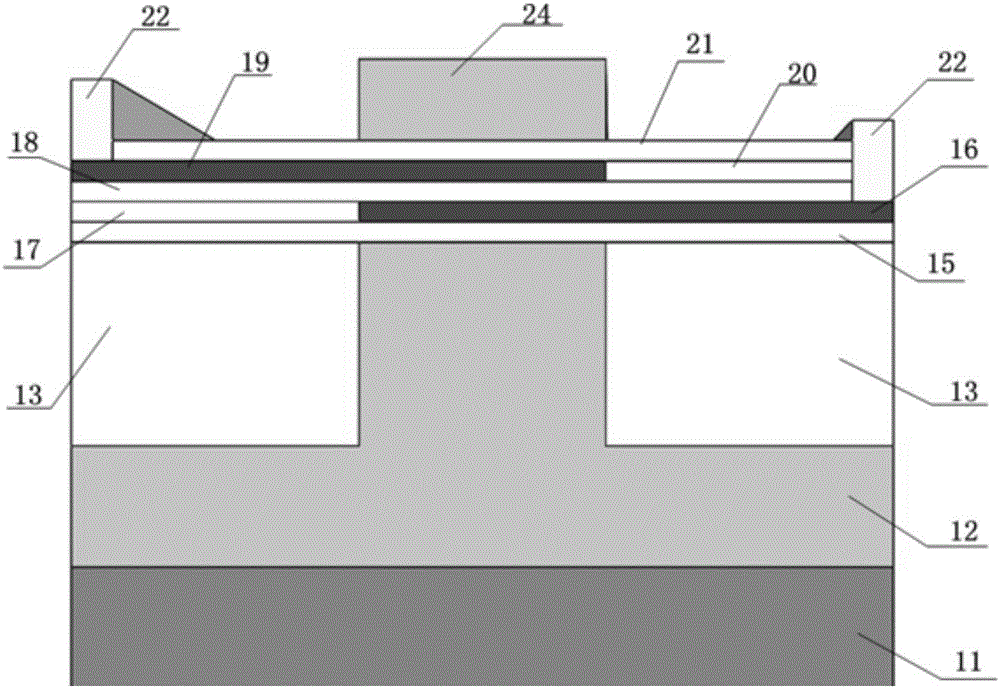Tunable laser based on graphene FP cavity
A technology for tuning lasers and graphene, used in lasers, laser parts, semiconductor lasers, etc., can solve the problems of uncompact device structure, slow tuning speed, difficult integration, etc., to reduce packaging costs, increase range, and improve tuning. effect of speed
- Summary
- Abstract
- Description
- Claims
- Application Information
AI Technical Summary
Problems solved by technology
Method used
Image
Examples
Embodiment 1
[0036] combined with figure 1 In this embodiment, the material of the tunable laser substrate 1 based on the graphene FP cavity is n-type doped silicon, and the material of the buffer layer 2 is indium phosphide (InP) or gallium arsenide (GaAs) with a thickness of 1-2 μm, The material of the upper optical cladding layer 9 and the lower optical cladding layer 3 is InGaAsP with a thickness of 0.15-0.3 μm, and the material of the upper barrier layer 8 and the lower barrier layer 4 is InP, InGaAsP, InGaAs or GaAs with a thickness of 1-2 μm The material of the active layer 5 is InGaAs quantum well, InGaAs quantum dot or InGaAsP quantum well with a thickness of 0.1-0.2 μm, and the material of the ohmic contact layer 10 is InGaP or GaAs with a thickness of 0.15-0.3 μm.
[0037] combined with figure 2 In this embodiment, based on the tunable laser grating structures 6 and 7 of the graphene FP cavity, the material of the substrate 11 is silicon dioxide, and the ridge width of the cor...
PUM
 Login to View More
Login to View More Abstract
Description
Claims
Application Information
 Login to View More
Login to View More - R&D
- Intellectual Property
- Life Sciences
- Materials
- Tech Scout
- Unparalleled Data Quality
- Higher Quality Content
- 60% Fewer Hallucinations
Browse by: Latest US Patents, China's latest patents, Technical Efficacy Thesaurus, Application Domain, Technology Topic, Popular Technical Reports.
© 2025 PatSnap. All rights reserved.Legal|Privacy policy|Modern Slavery Act Transparency Statement|Sitemap|About US| Contact US: help@patsnap.com


